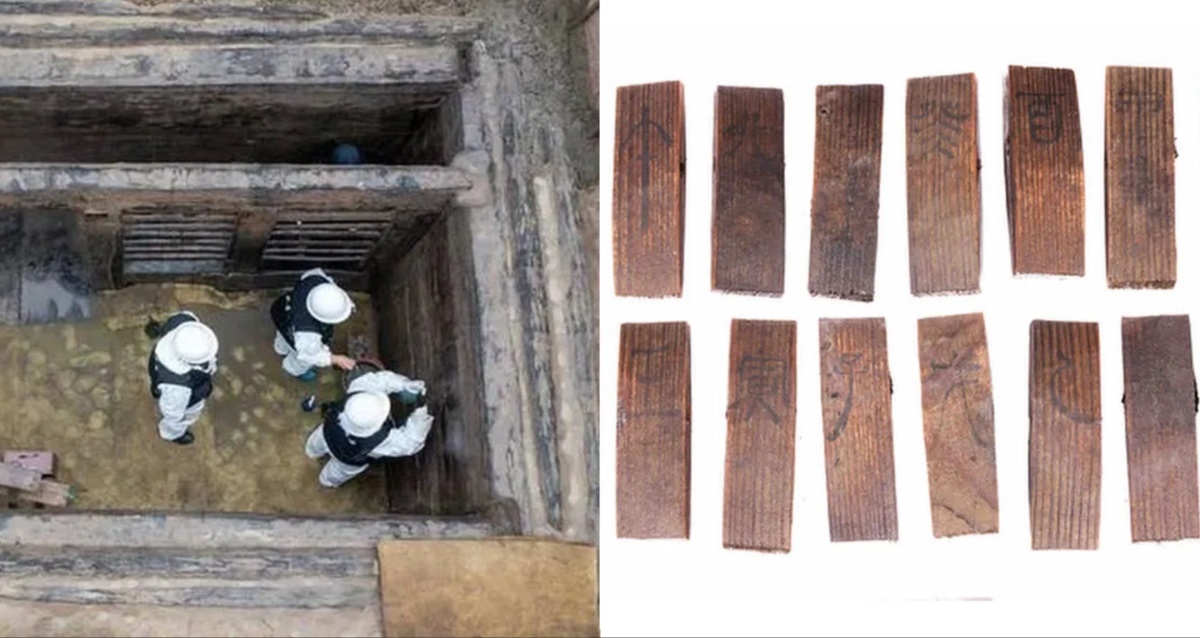2,000-year-old "Celestial Calendar" Discovered in Ancient Chinese Tomb

Mystery News ,China :- Archaeologists in China have recently uncovered an intriguing set of rectangular wooden pieces within a remarkably well-preserved tomb that dates back 2,000 years. Located in the southwest of the country, the artifacts consist of 23 wooden slips, each measuring about an inch wide and 4 inches long. These slips are adorned with Chinese characters associated with the Tiangan Dizhi, an ancient astronomical calendar originating from the Shang dynasty, ruling from approximately 1600 B.C. to 1045 B.C.
The significance lies in the circular perforations at the edges of each slip, suggesting they were once bound together. Experts speculate that one slip may have represented the current year, while the other 22 could pinpoint specific years within the ancient calendar. However, the exact functionality of these calendrical wooden slips remains a mystery.
This groundbreaking discovery, found in a tomb in the Wulong district, approximately 870 miles southwest of Beijing, sheds light on a previously unknown aspect of ancient Chinese culture. The tomb, dating back to 193 B.C. during the Western Han dynasty, is hailed as the best-preserved wooden-chamber tomb ever found in China southwest.
Archaeologist Wang Meng described the tomb as a treasure trove, containing over 600 cultural artifacts. These include lacquerware bowls, boxes, jars, plates, bamboo utensils, musical pipes, copper items, wooden figurines, and various pottery and bronze objects.
The Tiangan Dizhi calendar, a mainstream aspect of Chinese astrology, takes an unusual turn with the discovery of these wooden slips. Astronomer Ed Krupp, uninvolved in the discovery but an expert in ancient skies, highlights the uniqueness of the calendric notations on wooden slips, marking the first and only known example of such inscriptions on this type of object. Krupp suggests that instead of serving as a calendar, the wooden slips may have been used to reference any year within the 60-year calendrical cycle.
Comparisons are drawn to a Taoist temple in Suzhou, where each year in the cycle is represented by a specially marked statue. Krupp emphasizes the significance of the artifacts found in the tomb, indicating a person of high status was interred. The abundance of rich and finely crafted materials showcases the opulence associated with this ancient burial site. The discovery opens a new chapter in understanding the cultural and astronomical practices of ancient China.


